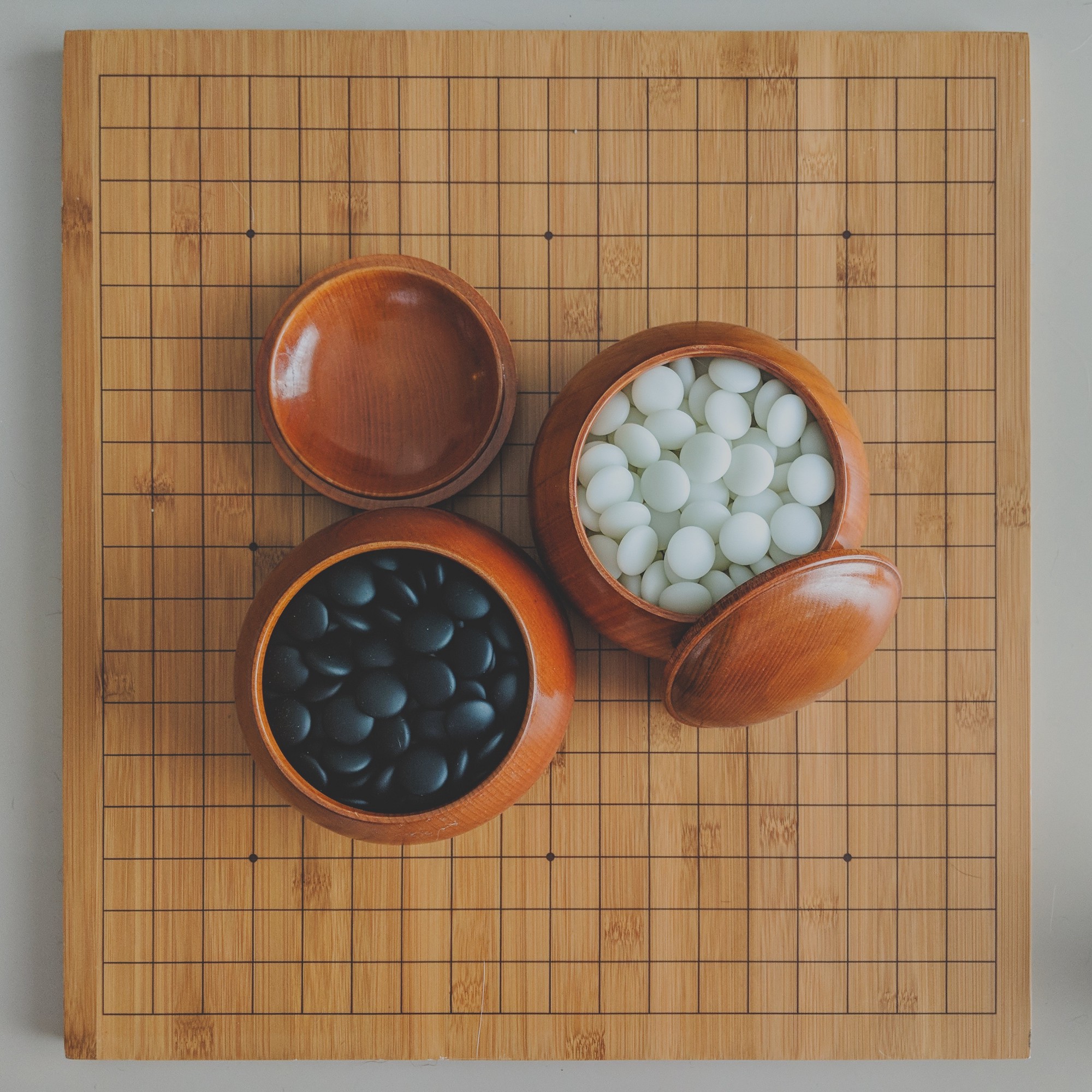What I Love About Go/Baduk
I hadn’t thought about Go or even played it until recently, when a colleague of mine who worked at nilenso raved about the elegance of the game. He mentioned Cho Chikun’s book to be an excellent introduction when I enquired further. Given that we had the book in our library, I decided to give it a read. By the end of it, I was fascinated not just by the beauty and elegance of the game, but also the history and culture.
Based on a lot of games I’ve played over the last couple of months, I thought it’d be nice to list down the reasons why I love Go to the extent that I do, and perhaps, make you curious enough to play the game :)
Simple and Elegant with fascinating depth
Learning how to play Go would just take you a few minutes. Don’t believe me? Check out this pamphlet. With just this, you might think that the game would be quite simple to play, but you would be so wrong. Once you start playing on a board bigger than a 9x9 one, you’ll quickly begin to see the depth and strategy involved.
So many variations exist, that it’s impossible to ever play the same game twice in a lifetime
The number of variations on a Go board (~ 10⁷⁰⁰) exceeds the number of atoms in the observable universe (~ 10⁸⁰).
Take a moment to absorb this fully.
Short-Term Tactics and Long-Term Strategy
Playing Go effectively is being able to figure out tactics for the immediate set of moves that will be played and strategy for how they fit with the rest of your stones on the board.
Playing a good game is immensely satisfying
Playing a game with well thought out moves flowing beautifully on the board against a worthy opponent is immensely gratifying, regardless of the result.
Easy to ramp up beginners with 9x9 games
Playing on a 19x19 board can feel daunting for beginners who are just learning the game. The smaller board size also allows for quick and simple games, which are ideal for beginners.
Can play on equal footing with beginners/pros
When playing against stronger opponents, a handicap is usually provided to compensate for the difference in strength, giving both players an equal chance to win. This difference is calculated using the Points Rating System. The handicap is provided either in terms of stones or as extra points (komi).
Aesthetics
Everything from the board, to the stones, to the bowls that hold the stones, there exists a sense of minimalism and beauty. Here’s an image to illustrate this:

The precision and care that go into the design are mind-blowing. The video below offers a sneak peek into the process of crafting some of the highest quality kaya boards:
Here’s another video of the process involved in making stones from clamshells:
Learn to get used to failures and to let go of pride/ego to improve
One way to get better at Go, in the beginning, is by playing a lot of games to get used to the rules, and understand various patterns/tactics/strategies. You need to explore different moves or variations to get a good feel for the game. This also means that you’ll probably end up losing a lot of games, which can be quite frustrating. To get better, it is essential to treat each failure as a learning experience and review and reflect rather than letting your pride or ego get in the way.
If I’ve managed to pique your interest, here are some excellent resources to get started, after learning the basic rules and playing a few games:
Sensei’s Library is the Wikipedia of the Go world. Lots of helpful and interesting information there.
Nick’s lectures are great. Highly recommended.
If you’re looking to play online, I’d recommend OGS. And hey, feel free to send me a challenge, if you’re looking for someone to play with :)